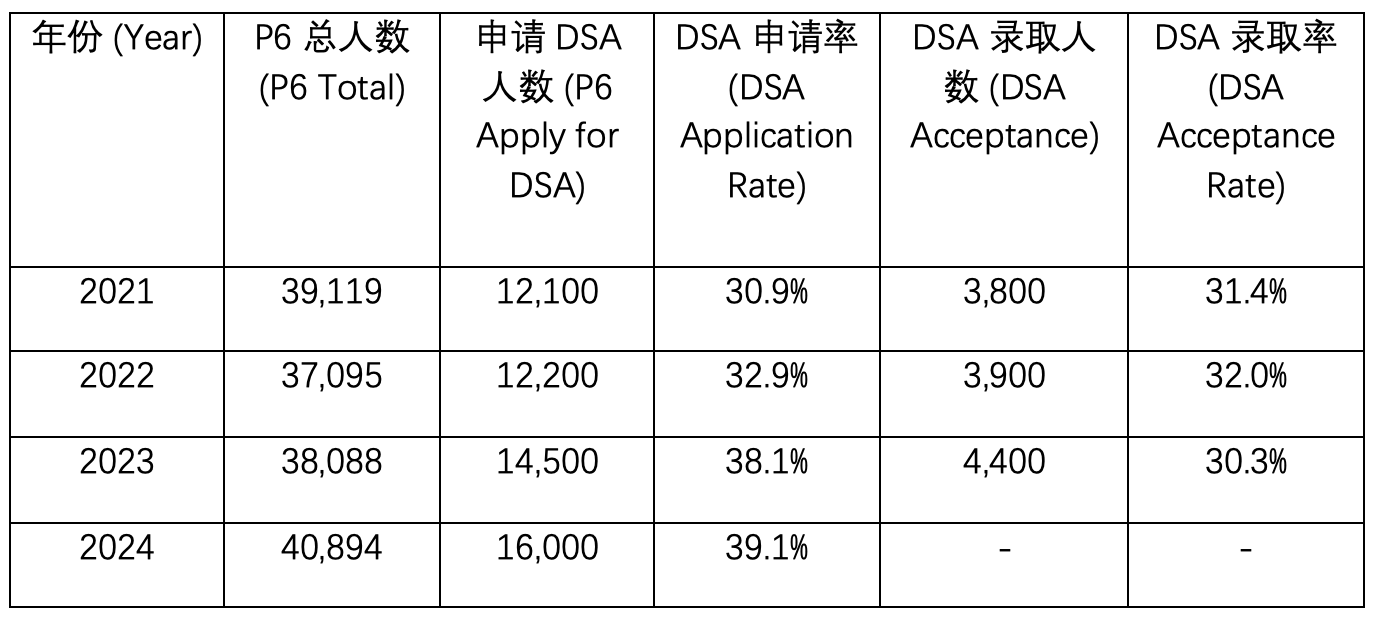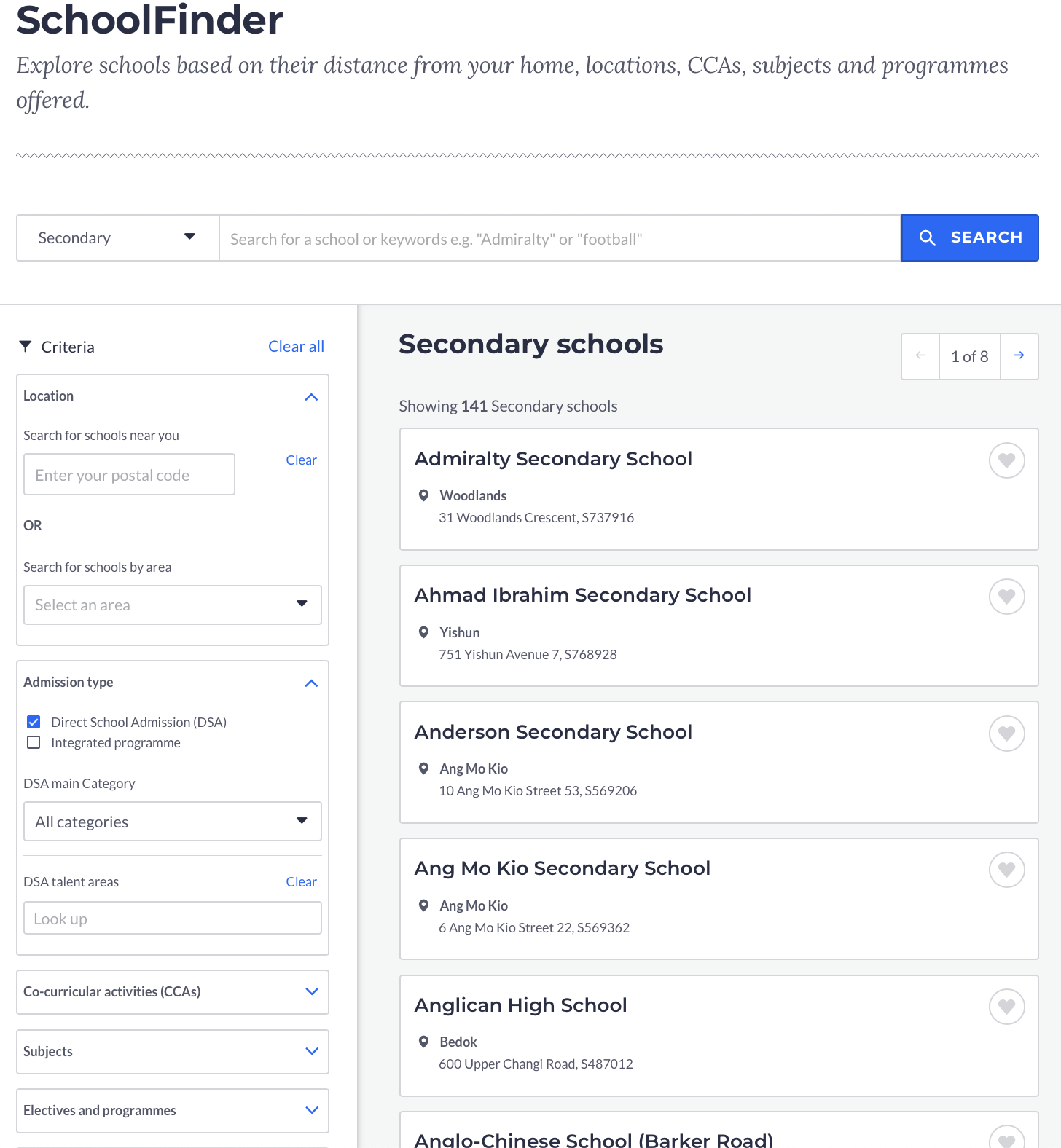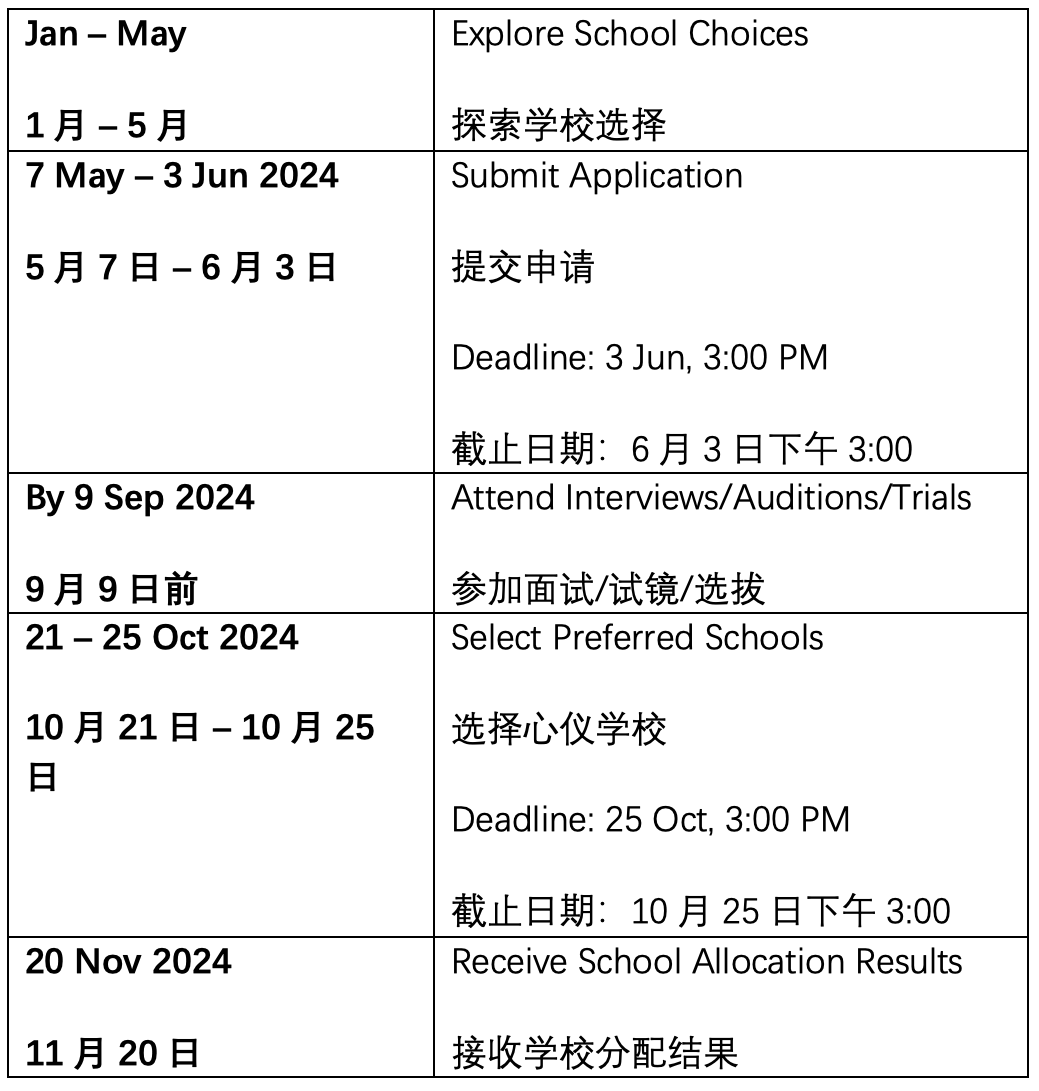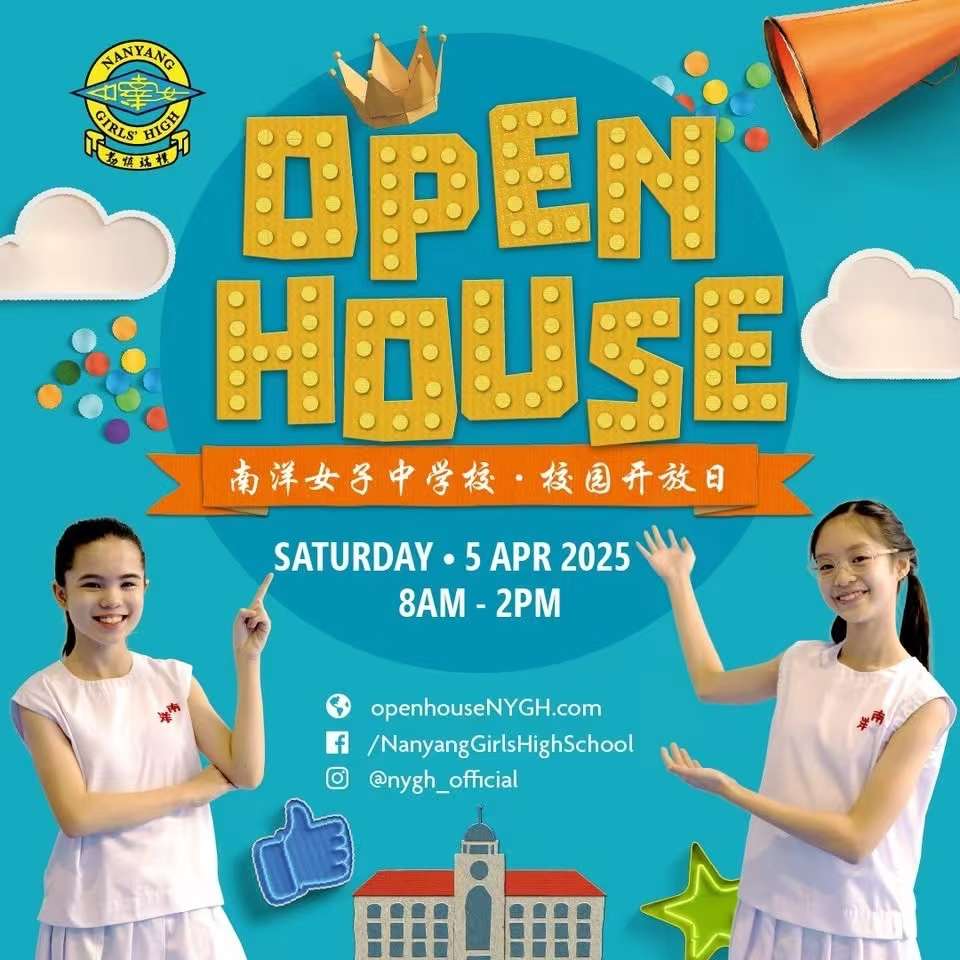Must-Read for Parents! Complete Guide to Singapore's 2025 DSA Application, All in One Article!
In Singapore, there is a unique pathway for students to enter secondary schools—the Direct School Admission (DSA) program. It allows P6 students to secure a place in their desired schools based on their academic or non-academic talents, such as sports, arts, leadership, and more. This provides a more diverse opportunity for students with strengths beyond academics.
But what is the acceptance rate for DSA?
Does every school offer DSA spots?
When does the DSA application start?
How can parents plan ahead for DSA?
What are the key factors for standing out in the competitive DSA process?
When it comes to DSA, countless questions arise, leaving many parents feeling overwhelmed.
To help parents and students better understand DSA, we are launching the "2025 DSA" series, which will dive deep into every aspect of DSA—from the latest policy updates to practical tips, school selection strategies, and more. Follow our articles to prepare for DSA and help your child secure a spot in their dream school!
As the first article in the "2025 DSA" series, this guide will provide a detailed overview of the latest DSA information for 2025, including:
- What is DSA?
- DSA Application and Admission Trends
- Schools Offering DSA and Their Acceptance Rates
- DSA Policies for Specialized Schools
- The 7 DSA Domains and Application Ratios
- Key DSA Timelines
---
1. What is DSA?
DSA-Sec (Direct School Admission for Secondary Schools) is a program that allows P6 students to secure a place in secondary schools based on their talents in areas such as sports, arts, uniformed groups, languages, and leadership, even before taking the PSLE. The goal of DSA is to recognize students with diverse talents and provide them with alternative pathways to secondary education.
Students who succeed in their DSA applications are guaranteed a place in their chosen school, provided they meet the minimum PSLE score requirement. This system helps students with unique talents find an environment that supports their development.
---
2. DSA Application and Admission Trends

In recent years, more P6 students in Singapore have been applying for DSA, making the competition increasingly intense. Data shows that from 2021 to 2024, the percentage of P6 students applying for DSA has steadily increased, reaching nearly 40%. However, the acceptance rate has remained stable at around 30%, meaning only about one in three applicants secures a spot.
The Ministry of Education (MOE) emphasizes that the DSA admission ratio will remain consistent, ensuring fairness and consistency regardless of fluctuations in student numbers.
---
3. Schools Offering DSA and Their Acceptance Rates
In Singapore, secondary schools include Independent Schools, Autonomous Schools, and Government Schools, all of which offer the Direct School Admission (DSA) program. Each year, more than 140 secondary schools participate in the DSA scheme.
In 2023, around 14,500 students applied for DSA, while secondary schools offered approximately 8,000 spots. However, only 4,400 students were eventually admitted through DSA. This means that although schools allocate a significant number of spots, not all will be filled through DSA, and the final acceptance rate remains around 30%.
For a detailed list of the 140+ participating schools, parents can refer to the MOE website’s Shortlist Schools tool. It allows filtering schools by preferred domain, CCA, school type, and PSLE score requirements.

DSA Secondary School Admission Ratio - Integrated Programme (IP) Schools: These schools usually admit 30%-35% of their Secondary 1 students through DSA. Examples include Raffles Institution (RI) and Hwa Chong Institution (HCI).
- RI admits around 30% of its Secondary 1 students through DSA.
- Nanyang Girls' High School (NYGH) admits 120-140 students annually through DSA, making up 30%-35% of its intake.
- Non-IP Schools (O-Level Schools): These schools can admit up to 20% of their Secondary 1 students through DSA.
In 2025, IP schools will increase their DSA admission ratio to 35%, while non-IP schools will maintain their 20% cap. However, new interdisciplinary categories (e.g., entrepreneurship, artificial intelligence) will provide additional opportunities for students.
---
4. DSA Policies for Specialized Schools
Most schools offer two admission pathways: DSA and PSLE. Even if a student’s DSA application is unsuccessful, they can still enter their desired school based on PSLE results. However, three independent schools are exceptions, as they do not participate in the S1 Posting Exercise. For these schools, DSA is almost the only admission route: NUS High School of Math and Science (NUSH) – Apply via the MOE website. • Receives about 2,000 applications annually. • Admits around 180 students, with an acceptance rate of 15%. School of the Arts (SOTA) – Apply via the school’s website. • Application period is typically from April to May each year.
School of Science and Technology (SST) – Apply via the MOE website.
---
5. The 7 DSA Domains and Application Ratios[size=16.002001px]DSA applications are divided into seven talent domains: Sports and Games: Football, basketball, swimming, etc. Visual, Literary, and Performing Arts: Painting, dance, music, etc. Debate and Public Speaking: Debate competitions, public speaking. Science, Technology, Engineering, and Mathematics (STEM): Robotics, coding, math competitions. Languages and Humanities: Language proficiency, history, geography. Uniformed Groups: Leadership and community service. Leadership: Student council, community leadership.
In 2024, approximately 37% of DSA applications were for sports and competitive activities, while around 20% focused on Science, Technology, Engineering, and Mathematics (STEM). Another 17% were related to performing arts, and 14% were based on leadership abilities and uniformed groups. Other talent domains included entrepreneurship & innovation, languages & humanities, as well as visual arts, design & media.
Notably, academic-based applications were not the majority, highlighting Singapore’s emphasis on a holistic education approach. The government encourages students to develop a diverse range of talents beyond academics, ensuring that those with strengths in sports, arts, and leadership also have opportunities to enter top schools through DSA.
---
6. Key DSA Timelines

Note: The timeline was updated by MOE on November 13, 2024. If there are any updates, we will notify you promptly.
---
January to May - School Selection
During this period, parents should familiarize themselves with the DSA programs and selection processes of different schools. It is essential to gather the latest information from school websites and attend various school open houses between April and May. This will allow both parents and children to experience the atmosphere and culture of each school.
For example, Nanyang Girls' High School will hold its Open House on April 5 this year.

---
May 7 (Tuesday) to June 3 (Monday) - Application Submission
During this time, parents need to prepare the necessary DSA application materials and submit them via the DSA-Sec portal by 3:00 PM on June 3.
---
June to September 9 (Monday) - Interviews, Trials, or Talent Tests
During this period, as the selection processes vary by school, parents should check the specific school websites for details.
Children who receive an invitation will participate in interviews, trials, or talent tests organized by the schools.
By September 9, parents and children will receive the school's admission results (Confirmed Offer, Waiting List, or Rejection).
---
October 21 (Monday) to October 25 (Friday) - School Selection
During this period, parents must submit up to three school preferences on the MOE website, ranked in order of priority (which will affect the admission outcome). The deadline for submission is 3:00 PM on October 25.
---
November 20 (Wednesday) - Release of Admission Results
The DSA admission results will be released simultaneously with the PSLE results, confirming the final school allocation for your child.
---
7. DSA Admission and PSLE
After applying for DSA, even if a child receives a Confirmed Offer (CO), they must still take the PSLE and meet the minimum admission score requirement.
Under the previous T-Score system, the minimum score was 200. Under the current Achievement Level (AL) system, the minimum requirement is AL20. This means that even if a child secures a CO in advance, the school reserves the right to revoke the offer if their PSLE score falls below AL20.
---
Difference Between Academic and Non-Academic DSA
Academic DSA places a higher emphasis on academic performance, typically requiring scores close to the school's admission cutoff.
For example, IP schools generally require a total score of around AL8-10 across four subjects, with outstanding performance in individual subjects.
Non-Academic DSA has more lenient academic requirements, usually 6-8 AL points below the school's admission cutoff.
---
For the results, they are typically announced around the time of the PSLE oral examinations, with other subject examinations following shortly after (approximately one month apart).
Between September and October, after the PSLE concludes but before the results are released in November, parents and students must decide whether to accept the CO or Waiting List (WL) offered by the school. This period is known as the DSA confirmation phase. Accepting a CO or WL means forfeiting the opportunity to participate in the S1 Posting process (where students apply to secondary schools based on their PSLE results).
If the PSLE score does not meet the minimum requirements for the IP program, the school may offer admission to the O-Level program instead. Parents can choose to accept or decline this offer. If the DSA offer is declined, the student will return to the S1 Posting process and apply to schools based on their PSLE results.
---
8. Commitment and Long-Term Planning
Parents should ensure that their child's DSA application aligns with their genuine interests and long-term commitment. DSA requires students to continue developing their talents throughout secondary school, so it's crucial to avoid forcing a child into a field they may not enjoy in the long run. For example, one parent shared that their child, a national gymnastics champion, chose not to apply for DSA in gymnastics because they couldn't commit to intensive training for six years. Instead, the child entered an IP school through PSLE and joined the gymnastics club without the pressure of DSA commitments.
---
Conclusion Now that you understand the basics of DSA, its acceptance rates, and the application process, it's time to start planning: How to choose the right school for your child? How to select the most suitable DSA domain based on their interests? What competitions and achievements should they aim for?
In our next article, we'll explore how to choose schools and domains for DSA, helping you and your child make informed decisions. For more information on DSA, PSLE, or other related questions, join our WhatsApp PSLE (2025) Study Group or contact Teacher Meng directly.
Stay tuned for more insights in our upcoming articles!
|